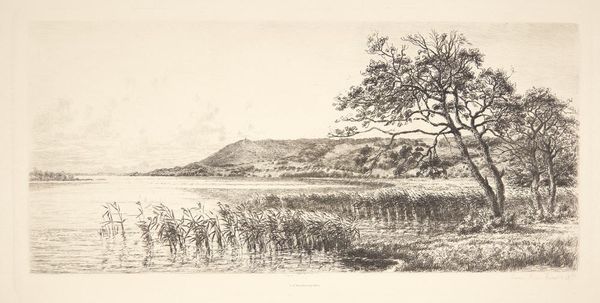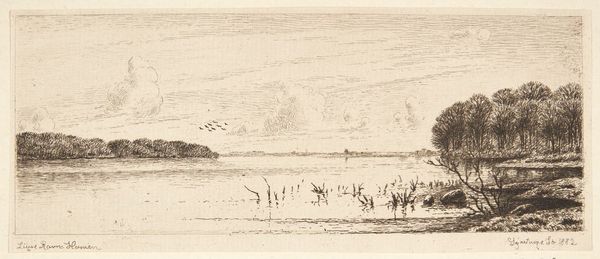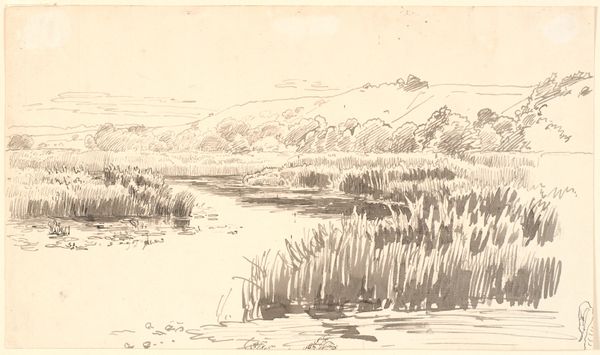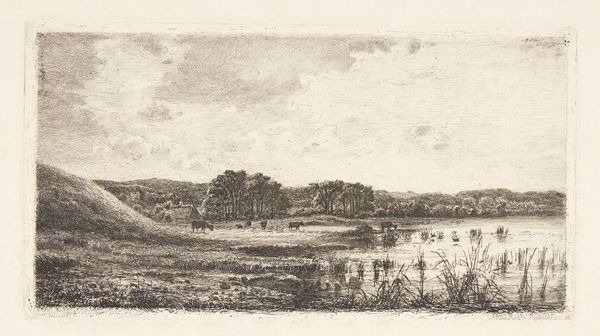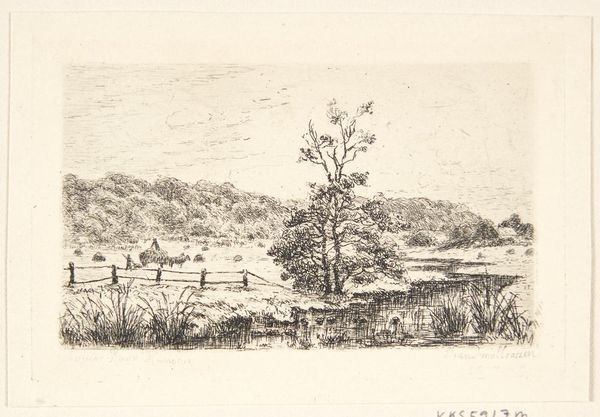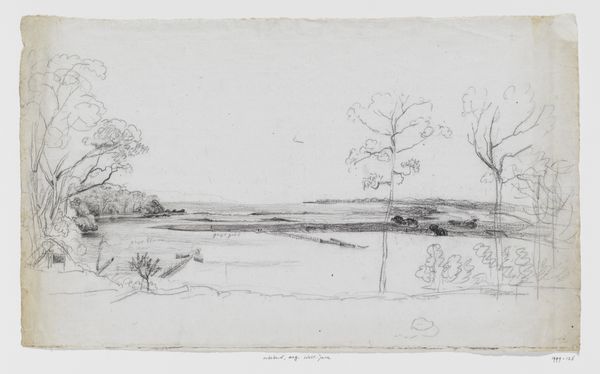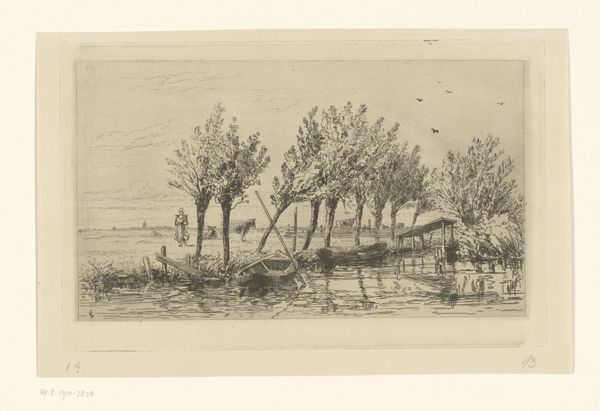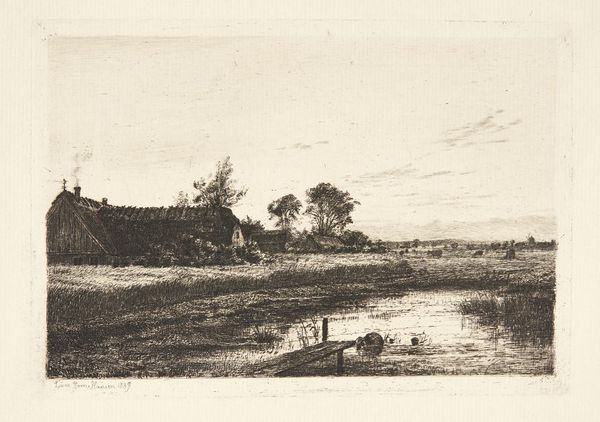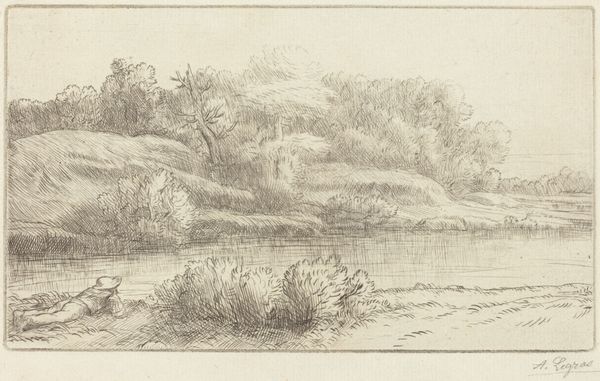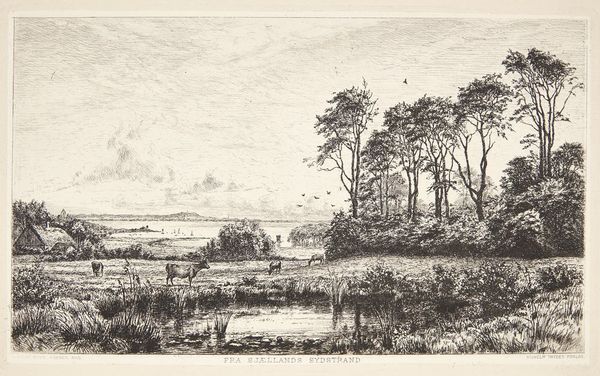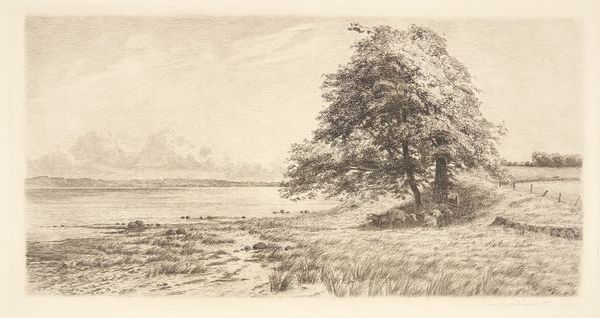
Dimensions: 195 mm (height) x 396 mm (width) (plademål)
Editor: This is Louise Ravn-Hansen’s 1898 etching, "Juul sø ved Himmelbjerget," or "Lake Juul by Himmelbjerget.” It’s a really delicate landscape. It makes me think of a quiet, personal observation. What do you see in this piece? Curator: I see a landscape, yes, but also a coded commentary on nationhood and belonging. Ravn-Hansen, working in a period of intense national romanticism in Denmark, subtly questions the dominant narrative. Look at the way the Himmelbjerget, a national symbol, is rendered: it's present, but not overpowering. Editor: I see what you mean. It’s in the background, almost understated. So, is she critiquing this nationalistic fervor? Curator: Perhaps not a direct critique, but certainly a broadening of the conversation. Consider that Ravn-Hansen was a woman artist in a patriarchal society. The act of depicting the landscape from her own perspective, emphasizing the quiet beauty of the lake and reeds, becomes a feminist act. Editor: That's interesting. I hadn't considered the gendered aspect of landscape art. So, by focusing on the more intimate details, she is making a statement? Curator: Exactly! She is carving out a space for alternative voices within the national narrative. Her careful, detailed work gives importance to other, less-celebrated aspects of the land. Think of it as an intersectional approach avant la lettre! Editor: I hadn't thought of it that way. It makes me look at the print with fresh eyes, realizing that even seemingly traditional landscapes can hold layered meanings. Curator: Indeed. Ravn-Hansen reminds us that even in idyllic landscapes, questions of identity, power, and representation are at play. Art invites critical thinking and constant inquiry. Editor: Thank you; that gives me a completely new perspective! It highlights the potential of landscapes to carry so many layers of social commentary.
Comments
No comments
Be the first to comment and join the conversation on the ultimate creative platform.
